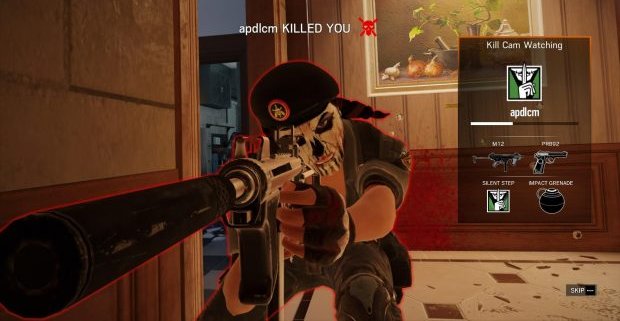CS:GO skins and all other Steam Market items are subject to a $400 maximum listing price. Items are often sold for greater sums through key trades, a sub-currency of the CS:GO economy. A single CS:GO key costs $2.50 USD and can be sold on the Steam Marketplace. To break through the $400 ceiling, you convert your listing price to a key value. If you want to sell an item for $500, divide your listing price by the key value, 500 by 2.5: 200 keys. Most people use third-party trading websites to list CS:GO’s rarest wares, but once a trade is made, those keys can be sold back into the Steam Marketplace.
There are some skins in our list that definitely break that cap, but due to both the extraordinary rarity of these items and their inconsistent prices in the key market, we’ve pulled our best estimates from varying trading sites. These are subject to change on a whim, but remain impressive no matter how transitory.
[Updated 11/30/2017]
Guns
Souvenir AWP: Dragon Lore, ~ $4200 (10,000 keys)Dragon Lore, Field TestedThe Cobblestone Collection
The original Dragon Lore skin originally fetched a hefty $10,000, but this commemorative skin still commands a quaint $4,200, almost as if to say “Why have my scope flash off the morning sun when I can just use these totally rad gold stickers?”
This particular Dragon Lore commemorates the Grand Final match of the 2015 DreamHack Cluj-Napoca CS:GO Championship between Natus Vincere and Team EnVyUs, and is autographed by MVP Denis Koslin.
AK-47: Fire Serpent, $3200Fire Serpent, StatTrak, Factory NewThe Bravo Collection
I’m no economist, but does it say something that this skin is basically three times as expensive as a real-world AK-47? This holiday, please think of the less fortunate arms dealers, and buy this commemorative memento from the Operation Bravo: Ruins map. Let’s see a Precious Things statue spit fire like this.
M4A4: Howl, ~ $3700 (1500 keys)Howl, StatTrak Factory NewThe Huntsman Collection, May 2014
Turns out crime still pays. OK, technically it's mundane internet art theft, but this bit of contraband still stands as one of the primo skins for competitive CS:GO enthusiasts, and it’s only getting rarer.
The Howl's extraordinary price is due to the unusual controversy that followed it after release, which included the gun's removal from distribution—but not from owners' inventories. CS:GO stopped dropping new Howls long ago, so the lucky initial owners of this lion-faced piece of copyright infringement own one of the most coveted status symbols in the game.
P90: Emerald Dragon, ~ $550Emerald Dragon, StatTrak, Factory NewThe Bravo Collection
Asian artwork is always in good taste. Just ask your local tattoo artist. Hopefully your aim is a little more straightforward than this poor lizard, because he’s all over the place on this skin. Remember, kids, always assign a designated dragon.
Might as well pick it up now, since it’s currently less than half of its original $1,000 price tag.
AWP: Medusa, ~ $1400Medusa, Minimal WearThe Gods and Monsters Collection
While this fetching gorgon skin demanded a hefty $400 upon release back in May of 2015, it’s only risen in value since, topping out currently at about $1,400. You might say its high value is set in stone… I’ll show myself out.
AK-47: The Empress, ~ $750Empress, StatTrak, Factory NewThe Spectrum 2 Collection
Finally, you too can be the belle of the ball, the becky with the good hair, the yas queen. Look, what do you want from me? It’s a pretty lady with blonde locks that would make Reinhardt blush. This skin helped ring in the Chinese release of CS:GO just last September, so if you’re looking for some fresh paint, have at it.
AUG: Akihabara Accept, ~$500Akihabara Accept, Factory NewThe Rising Sun Collection
Anime is trash… and so am I. The Akihabara Accept still commands a decidedly not-trash price (a remarkably consistent $500 average since release, though some have sold for over $1,000), so I guess we’re stuck with visions of pink-haired teens slaughtering us from afar. God bless Japan.
Five-SeveN: Hyper Beast, ~$200Hyper Beast, StatTrak, Factory NewThe Operation Hydra Collection
Doom’s floating sphere of teeth, the Cacodemon, has got nothing on this sinister-looking Swedish meatball. If you pull the trigger, it’s like wiggling its tongue. If you want a little extra spice with your meatball, the Hyper Beast skin can also be purchased at considerably lower rates for the AWP, Nova, and M4A1-S.
MP9: Bulldozer, ~$250Bulldozer, Factory NewThe Assault Collection
You’ll be a bulldozer in the eyes of your enemies with this skin: Loud, yellow, prone to making odd noises when you back up. The Assault Collection skin pack hasn’t been part of the regular loot drop in CS for a few years, so it’s gone from selling like dirt to plowing cash.
AWP: Boom ~$400Boom, StatTrakThe eSports 2013 Collection
With a classic comic book framing, this skin shows off its entrepreneurial spirit. No need for boisterous cries of “Boom! Headshot!” when you can just cut out the middleman. I look forward to the eventual Disney-owned shared universe.
Souvenir USP-S Road Rash, ~$400Road Rash, Factory NewThe Overpass Collection
Remember when mom would take you to the mall for new clothes, but your enlightened 13-year-old self just had to have those pre-torn jeans? This is like the gun equivalent of that. Why didn’t you stop us, mom?
This skin dropped during the ELEAGUE Atlanta 2017 CS:GO Championship Grand Final Match, and is autographed by MVP Peter Rasmussen AKA “dupreeh” of team Astralis.
M4A1-S: Master Piece, ~$2900Master Piece, Souvenir, Factory NewThe Overpass Collection
If you look closely enough, you can see a faint homage to the Mona Lisa smile between the first squiggly line and the fifth, just behind the lettering that reminds you of a passing train car.
This skin was dropped during the ESL Cologne 2015 CS:GO Championship’s Quarter Finals match, and is signed by MVP Håvard “rain” Nygaard, then of Team SoloMid.
AK-47: Red Laminate, ~$450Red Laminate, StatTrak, Factory NewThe eSports 2013 Collection
They took an AK-47, dashed it with some nice red paint, and poured laminate all over it. It’s the Flamin’ Hot Cheeto of guns. Get this one while it’s hot, because it’s been rising from a modest $300 to a $450 average since October 2016.
AK-47: Fuel Injector, ~$320 (156 keys)Fuel Injector, StatTrak, Factory NewThe Wildfire Collection
Yellow. The color of sunshine, bees, and the light you try to ignore while driving. Throw caution to the wind with this simple skin (sold at a remarkably consistent $400 average) that will leave your victims wondering how that oversized banana got the drop on them.
AK-47: Wasteland Rebel, $425Wasteland Rebel, StatTrak, Factory NewThe Vanguard Collection
As far as war chants go, “MAKE THEM CRY!” ain’t too bad. It certainly rests alongside other such classics as “YOU DON’T EVEN GO HERE!” and “HEY, WANNA FIGHT?”
For you Counter-Strike lore hounds, the Wasteland Rebel’s flavor text indicates it’s a favorite of Naomi, a bodyguard to Operation Bloodhound Terrorist leader Valeria Jenner.
AWP: Oni Taiji, ~ $145Oni Taiji, StatTrak, Factory NewThe Operation Hydra Collection
“Taiji,” more commonly referred to in the West as “Tai Chi,” is the ancient Chinese philosophy of supreme ultimate state of undifferentiated absolute, infinite potential, and the oneness before duality. You know, yen and yang. Pretty heady stuff for a gun with a demon on the butt. While it’s currently on a downswing price-wise, it might not be a bad idea to pick up one ASAP considering Operation Hydra recently ended.
AWP: Pink DDPAT, ~ $130Pink DDPAT, Souvenir, Minimal WearThe Overpass Collection
At some point, Counter-Strike scientists asked “if Barbie had an AWP, what would it look like?” The Pink DDPAT pairs well with any seasonal outfit, be it for a jaunt at the mall, or in the official Barbie DreamCamper. Sleep well, Ken.
If you’re worried about getting dropped by cross-map headshots, maybe take a chance on the DDPAT at the lowest price it's seen since release three years ago. This souvenir skin commemorates the 2017 PGL Krakow CS:GO Championships, was dropped during the Group Stage match between SK Gaming and Immortals, and is autographed by MVP Fernando Alvarenga.
M4A4: Royal Paladin, ~$320Royal Paladin, StatTrak, Factory NewThe Revolver Case Collection
The Royal Paladin is a proper statesman’s rifle. An elegant leaf engraving, fine ivory, and enough gold to fix at least a few mouthfuls of teeth. Though it’s had some significant dips, the Royal Paladin has maintained an impressive $350 average price over two years. That’s monarchy for you.
AK-47 Neon Revolution, ~$155Neon Revolution, StatTrak, Factory NewThe Gamma 2 Collection
Pink as a clown’s bum, with “ANARCHY” emblazoned in spray paint on the side. It’s a rifle with all the quiet modesty of a Jared Leto acting role. Wait, when did this skin come out? Summer of 2016? Oh, no. *Checks flavor text.*
Well, at least something is producing a better return-on-investment than that trainwreck.
USP-S: Neo Noir, ~$120Neo Noir, StatTrak, Factory NewThe Spectrum Collection
I’ve seen things you people wouldn’t believe. Counter-Terrorists on fire off the shoulder of bomb site A. I watched grenades glitter off the skybox into our spawn from across the map. All those moments will be lost in time, like lag in the rain.
The USP-S is one of the few guns on this list with roots as a fan favorite from Counter Strike: Source, so maybe a few of those epic moments can live on with you in the end.
Knives
Karambit: Lore, ~ $1400Lore, StatTrak, Factory New
It’s a knife called “Lore,” but I’m not exactly seeing any further exploration of the Counter Strike world beyond a rad visual design. Still a better love story than Destiny. Ha, commentary.
Comes with a custom knotwork paint job, and it shows. The skin originally sold for $400, a mere penance compared to the $1,200 minimum you’ll likely find these days.
M9 Bayonet: Night ~$620Night, Factory New
Sleek, yet simple. Dark, yet pointy. Seems like as good an excuse as any to yell out “I AM THE NIGHT!” over and over again. If, like its flavor text describes, it’s “the bite at your neck,” this skin might just bleed your wallet dry.
M9 Bayonet: Crimson Web ~$950Crimson Web, Factory New
Some knives are silver, some are black, some are even the color of the rainbow. This little buddy does you the solid of getting all red and nasty before you even start to work. Thanks, champ. Also spreads jam really well.
Gloves & Stickers
Moto Gloves: Spearmint, ~ $700Spearmint, Minimal Wear
Wash the taste of a bad match out with these minty mittens, at least until all your friends are asking for a piece. Warning: Do not ingest gloves, especially ones that taste like pine trees.
Hey, at least after spending upwards of $700 (up from $400 a year ago) on gloves, you have all the right in the world to growl “and I’m all out of bubblegum.”
IBuyPower (Holo) ~$4500Marketplace Link
You thought the IBuyPower sticker was something else back when it debuted at $400 in 2014, huh? Well, Mr. Moneybags, hope you're ready for a second mortgage, because this increasingly rare sticker now tops a majority of all CS:GO skins for a lordly $4,500 average.
Although the “Contraband” Howling Dawn sticker goes for about $200, the first-edition esports stickers are by far the priciest. Among them, Team iBUYPOWER’s holographic sticker reaches a whole other level, due to the fact that the team was banned by Valve and dissolved after the discovery that they fixed matches for their own benefit.










